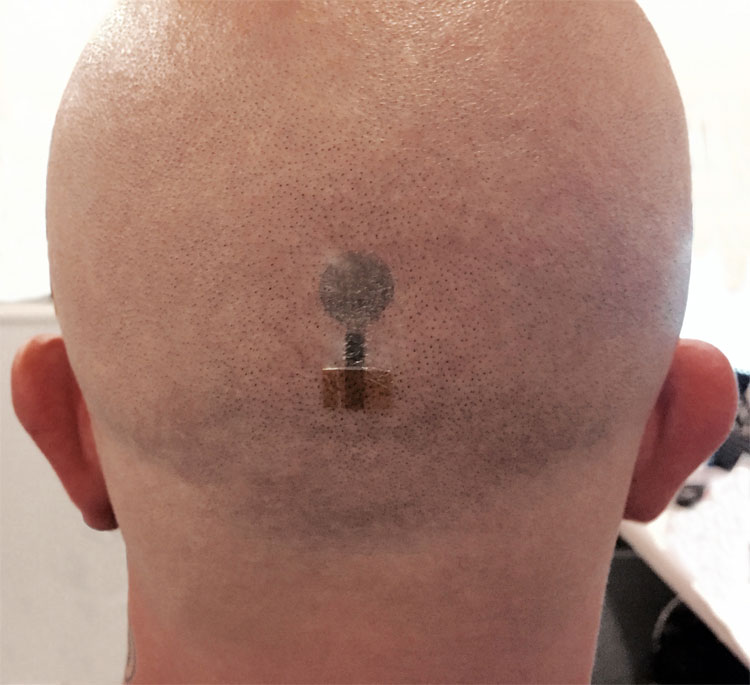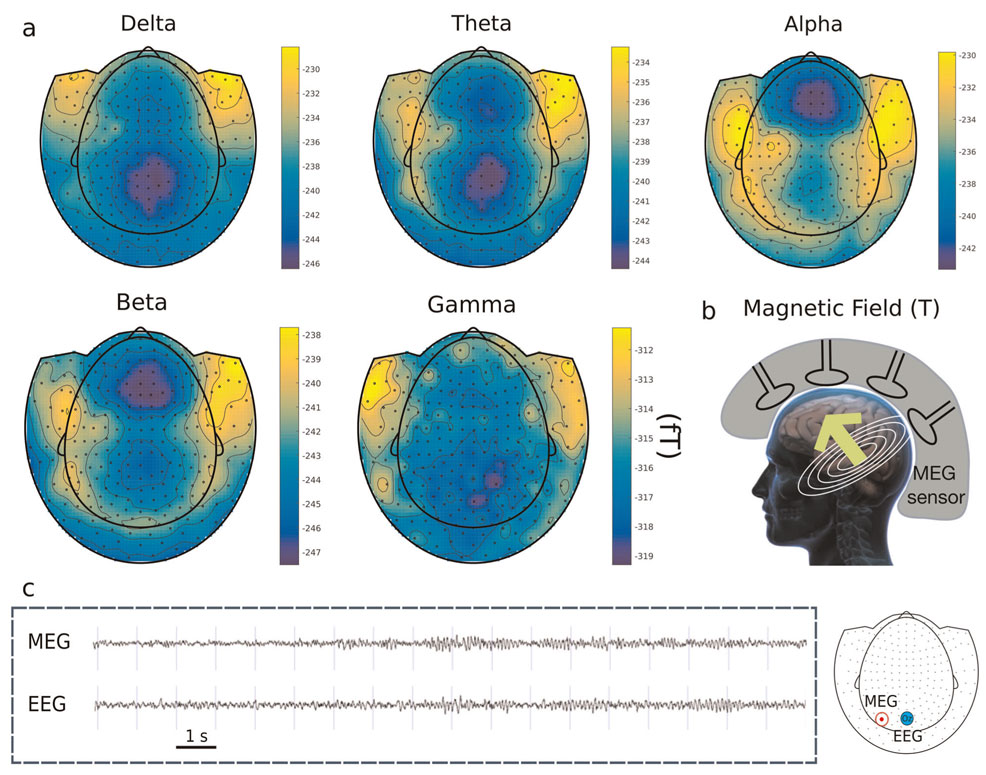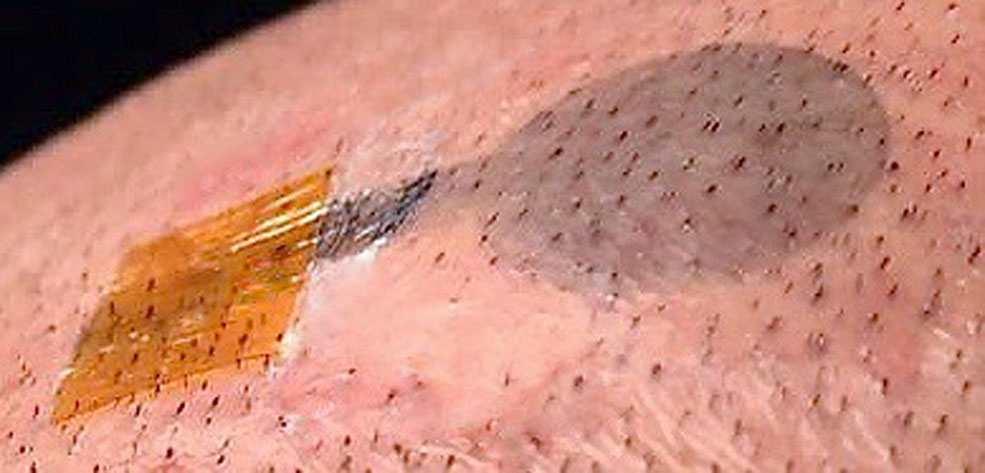
23rd May 2020 Tattoo electrodes can record brain activity Scientists in Austria have developed wafer-thin tattoo electrodes for recording brain activity, which are also "dry" and therefore do not require a gel medium to function.
Back in 2015, a team of Austrian and Italian scientists developed so-called "tattoo electrodes" – conductive polymers, created using an inkjet printer on standard tattoo paper and then stuck to the skin like transfers, able to measure heart or muscle activity. This type of electrode, optimised in 2018, opened up completely new paths in electrophysiological examinations, such as electrocardiography (ECG) or electromyography (EMG). At just 700 nanometres (nm) in thickness – about 100 times thinner than a human hair – the tattoos could adapt to uneven skin and appear hardly noticeable on the body. Building on this pioneering achievement, the same team has now achieved a further milestone in the measurement of bioelectrical signals: modifying the tattoo electrodes in such a way that they can also be used in electroencephalography (EEG), i.e. to record brain activity. The research is led by Francesco Greco, PhD, head of the Laboratory of Applied Materials for Printed and Soft electronics (LAMPSe) at the Institute of Solid State Physics at Graz University of Technology, Austria. His team's work is published in the Nature Partner Journal, Flexible Electronics.
These latest versions are based on the same approach as before, i.e. inkjet printing of conductive polymer on tattoo paper. However, the composition and thickness of the transfer paper and conductive polymer have been optimised to achieve an even better connection between the electrode and the skin, and to record EEG signals with maximum quality. "Brain waves are in the low frequency range and EEG signals have a very low amplitude," explains Laura Ferrari, from the BioRobotics Institute at Sant'Anna School of Advanced Studies in Pisa, Italy. "They are much more difficult to capture in high quality than EMG or ECG signals." Tests under real clinical conditions have shown that EEG readings with the optimised tattoos are as accurate as conventional EEG electrodes. Moreover, they are "dry" electrodes; in contrast to gel electrodes, they work without a liquid interface and are thus excellently suited for long-term measurements. Even hairs growing through the tattoo do not interfere with the signal recording. "Due to inkjet printing and the commercially available substrates, our tattoos are significantly less expensive than current EEG electrodes and also offer more advantages in terms of wearing comfort and long-term measurements in direct comparison," adds Greco. The team is now researching ways of using this technology in healthcare, neuroengineering and brain-computer interfaces. Perhaps in the future, as it becomes more widely accessible and mainstream, the concept may appear in wearable devices to monitor our health in real time, or for recreational uses such as sports, fitness, gaming and entertainment.
Comments »
If you enjoyed this article, please consider sharing it:
|









